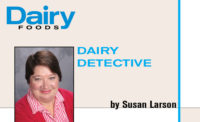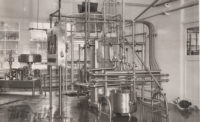Clean label can be categorized multiple ways, but in the end, it’s the ingredients and their origins that matter for labeling. Four P’s — pronunciation, production, processing and purpose — all contribute to clean-label perceptions.
Consumers want it simple, shown by the 15% of total global product launches in 2016 that were labeled “free from additives or preservatives.” Additives and preservatives don’t often meet the four P’s. For consumer-targeted products, simple ingredients such as those derived from milk provide health, function and flavor to help people thrive.
Pronunciation
Consumers are introduced to milk at a young age, meaning milk and the ingredients made from it are recognizable
and relatively easy to pronounce. This a highly valuable attribute — having easy-to-
recognize ingredients is one way consumers define clean label.
However, alternative protein sources are causing confusion and making consumers question simple dairy ingredients. What can be proven is that authentic dairy ingredients provide unmatched nutrition and flavor.
Production
The environment has always been top of mind for U.S. dairy farmers. They continue to develop new ways to improve the sustainability of their farms.
Today, producing a gallon of milk uses 90% less land and 65% less water than it did in 1944. It also requires a 63% smaller carbon footprint. And dairy production accounts for only approximately 2% of total U.S. greenhouse gas emissions.
These achievements can be credited to modern farming practices backed by scientific research and the focus on cow health. In one diet type, cows turn low-value agricultural plant materials into nutrition by converting materials that are indigestible by humans — such as grass, silage, almond hulls, canola meal and citrus pulp — into high-quality dairy ingredients.
Processing
Separating milk into its component ingredients is straightforward.
“Filtering dairy ingredients from milk separates the nutritional components based on physical size. Milk and whey can be made into value-added ingredients that are high in protein using ultrafiltration, a filtration system that uses membranes with a specific pore size. Ultrafiltration retains and concentrates the proteins, allowing the lactose and minerals, which are smaller in size, to pass through — or permeate — the membrane,” said K.J. Burrington, dairy ingredient applications coordinator with the DMI-supported Wisconsin Center for Dairy Research, Madison, Wis.
Purpose
For a product to fit consumers’ clean-label expectations, each of its ingredients must serve a purpose and contribute value. Dairy proteins provide a range of functional properties, including flavor, emulsification, foaming, heat stability, water binding and gelation. These properties are a fit for multiple foods and beverages, providing structural, sensory and nutritional qualities.
More specifically, dairy proteins have the advantage of offering a neutral flavor and creamy texture. Many nondairy protein sources have strong flavors and need masking agents or other ingredients to cover the taste, thus adding additional ingredients to a product. Dairy does not have these challenges, and emerging dairy ingredients such as native whey are showing even further clarity and flavor improvements.
Benefits count, too
For food and beverage manufacturers, development of successful on-trend products involves the use of simple ingredients that also have a benefit. Dairy proteins, for example, help support healthy aging, satiety/weight management and exercise recovery because they are complete, high-quality proteins. Whey proteins, specifically, are some of the best sources of branched-chain amino acids, including leucine, which stimulates muscle protein synthesis. Featuring a complete amino acid profile, whey proteins are easy to digest and absorb.
These factors help dairy proteins solidify a top spot on protein quality measurement scores. The digestible indispensable amino acid and protein digestibility corrected amino acid scorings rank most dairy proteins above other sources. Moreover, most of the nondairy sources require a mix of proteins to achieve a similar protein quality, requiring a larger serving size and resulting in a higher caloric intake.
The Institute of Food Technologists’ annual meeting in June set the stage with examples of how dairy can contribute to product formulations. The U.S. Dairy Export Council showcased a frozen matcha dairy bar that contains 15 grams of protein and uses milk protein isolate (MPI). A milk and honey bedtime beverage, meanwhile, contains 20 grams of protein. It uses reduced-fat milk, milk protein isolate and micellar casein concentrate, which contributes to a creamy taste and texture.
U.S. Dairy is a source for manufacturers looking for simple, responsibly produced nutritional and functional ingredients. Visit ThinkUSAdairy.org for more information.







